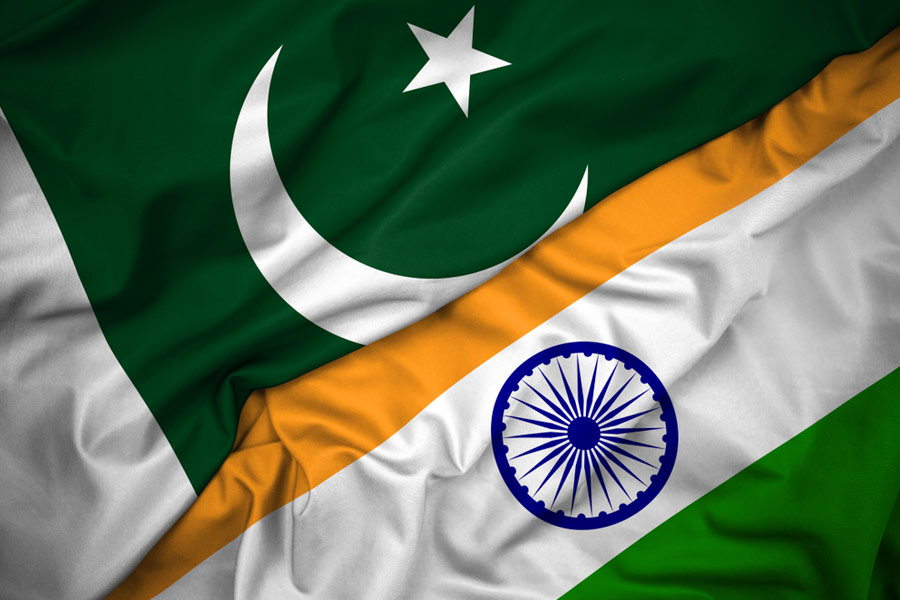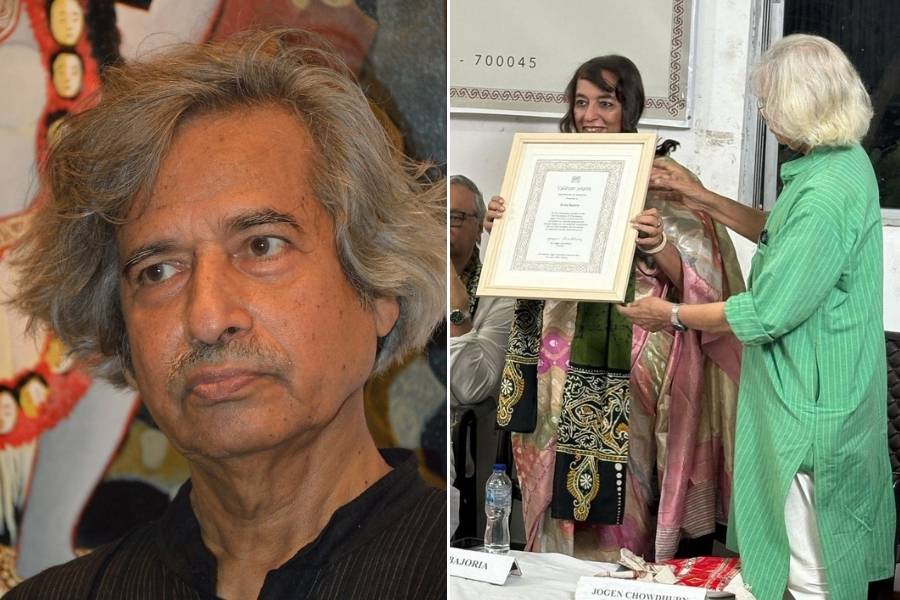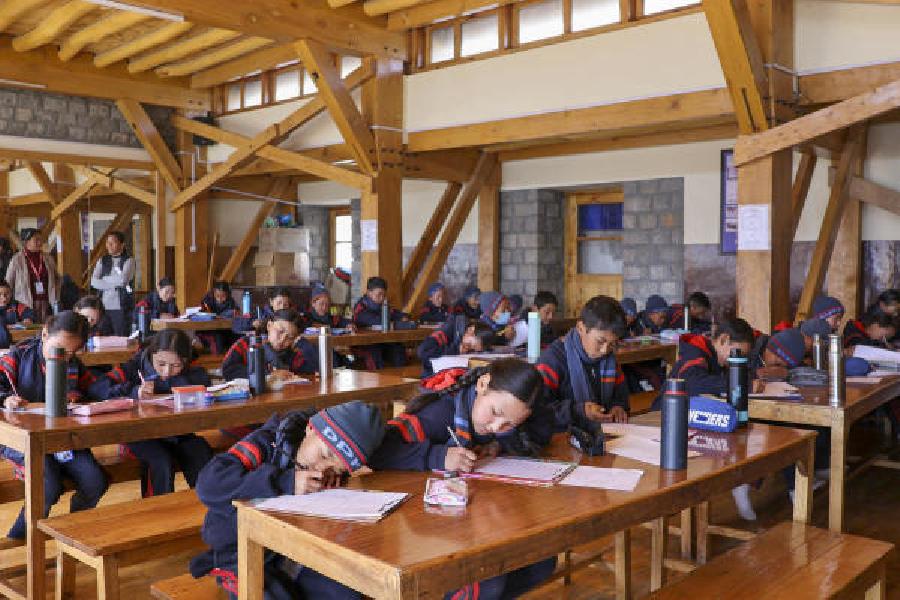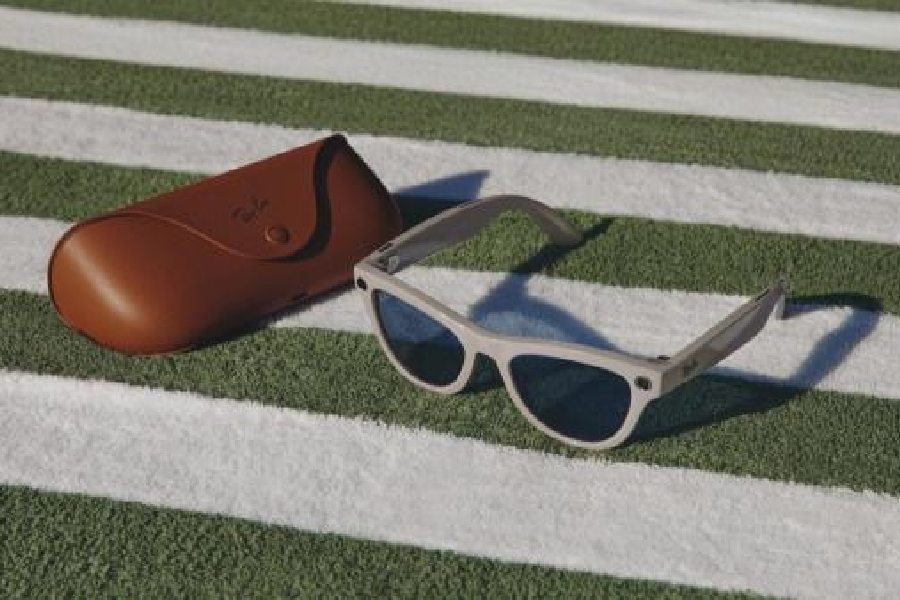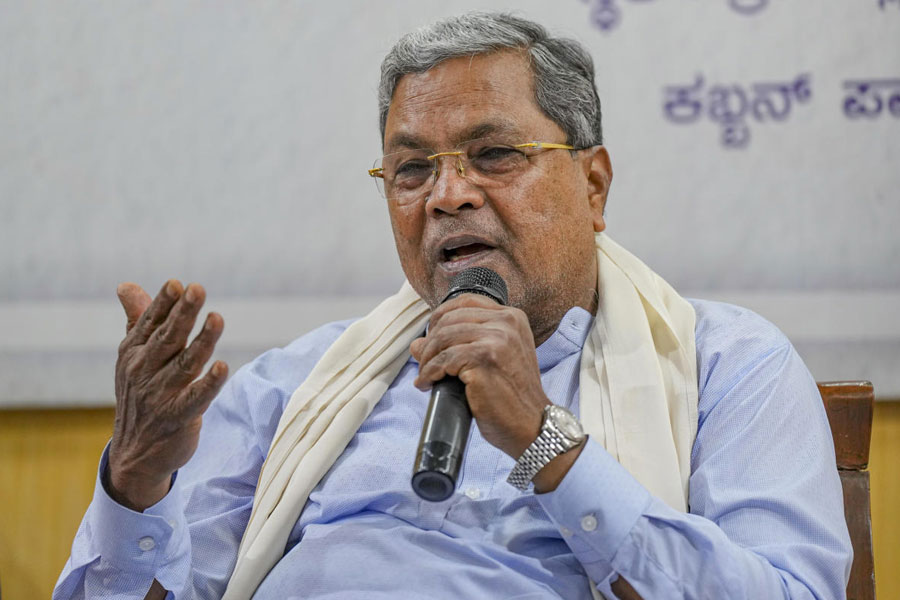 |
| It turned out to be a special Christmas Eve for 115 street children, courtesy Puja Kejriwal. The Salt Lake resident, along with cousin Ekta Agarwal and friend Ritika Agarwal, booked a show of Aamir Khan’s PK at INOX Swabhumi for children who live on the streets of Park Street, Park Circus and the EM Bypass. ‘My only objective was to see them smile. PK was the best option as they were aware of the film and Aamir Khan’s films also have a social message,” said Puja who had taken 30 street children to KFC, Park Street, on her last birthday. INOX pitched in, too, sponsoring cola and popcorn for the kids. “We also gifted some movie merchandise to the children,’ said Subhasis Ganguli, regional director (east), INOX |
Coins from Bengal are on display as part of Mudra Utsav, the annual exhibition and conference organised by Numismatic Society of Calcutta, at Haldiram Banquet Hall in Ballygunge till Sunday.
“Coins make history speak. They are not just a means of exchange but also a store of value. Their metallic quality helps judge the economic state of a reign while their spread indicates how far a ruler’s sovereignty extended,” said former finance minister and economics teacher, Asim Dasgupta, at the inauguration. He also referred to remarkable work by the numismatist fraternity, singling out Bratindra Nath Mukherjee’s discovery of an ancient script called Shell lipi.
Chhanda Mukherjee, former deputy keeper, numismatics and epigraphy, at Indian Museum, referred to areas in Bengal such as Chandraketugarh, Murshidabad and Pandua-Mahanad area of Hooghly where coins have been found. “The earliest hoard of Gupta coins was found right here in Kalighat,” she said.
Some of the coins mentioned by Mukherjee are on display at the exhibition. Ujjwal Kumar Saha’s Gupta coins date back to the reigns of Samudragupta and Chandragupta I. There are also gold dinars of the Kushan era. Somnath Basu’s collection is on independent rulers of Bengal, from Fakr al Din Mubarak Shah (1334-1349) to Daud Shah Karanani (1572-1576). Ravi Shankar Sharma has displayed Mughal coins from Bengal mints. There are Akbar rupees minted in Satgaon (also known as Saptagram, now in Bangladesh) and in Bang, a soobah of Bengal. “These coins were minted after Akbar’s conquest of Satgaon,” Sharma said.
Mints were there in Patna too, built by Magadh ruler Ajatashatru around 490 BC. A Shah Jahan rupee represents the Patna mint. The only Mughal coin in Bengali script was issued from Alamgirnagar, Aurangzeb’s name for Cooch Behar. “The coin is rare as the area changed hands soon,” Sharma added.
The East India Company, too, had issued bilingual sikkas, with both Bengali and Persian scripts, from their Benaras, Farukabad and Calcutta mints once they realised the Shah Jahan II Mughal coins that they had been copying did not suit the largely Bengali-speaking populace of the Bengal Presidency.
Another notable exhibit is a punch-marked coin from the Bari-Wateshwar area of present-day Bangladesh. Carrying a sun, a boat, an open cross and a six-armed symbol, the silver alloy coin dates back to 3rd to 2nd century BC. “I procured the coin just last week,” said Anup Mitra, president of the society.
Collectors of coins and stamps will also find a lot of interesting items on sale at stalls put up by dealers.
 |
| Chief minister Mamata Banerjee hands over Jahar Lal Chandra Merit Scholarship to a Madhyamik topper. Picture by Bishwarup Dutta |
Toppers feted
Forty-one students from across Bengal received the Jahar Lal Chandra Merit Scholarship from chief minister Mamata Banerjee on Tuesday. The scholarship has been introduced by PC Chandra Group in its 75th year to acknowledge and honour Madhyamik toppers from each of the 19 districts of Bengal. It is named after the group’s former chairman, Jahar Lal Chandra.
The highest-scoring boy and girl from every district received Rs 50,000 each. “Recognition and motivation are two factors that spur people to move ahead. I wish this humble contribution will help students to do well in their lives,” said A.K. Chandra, the group managing director of PC Chandra.
“Please show the children the beautiful PC Chandra Gardens,” the chief minister requested after giving away the scholarships.
 |
| Students of Bhowanipur Baikali Association perform at ICCR. The students presented songs from Tagore’s plays, under the guidance of singer Pramita Mallick. Actor Ranjit Mallick was also present on the occasion |
Gender bender
A woman is either a goddess or a vamp. A woman’s rightful place is at home and in the kitchen and housewives are always nagging. These are some of the stereotypical portrayals of women in mainstream cinema that were discussed by Mohan Agashe, actor and psychiatrist, in a panel discussion on Violence against Women, presented by Victoria Memorial Hall, Goethe-Institut/Max Mueller Bhavan and Kolkata Sukriti Foundation.
The discussion was aimed at determining the role of media — negative or positive — in portraying violence on women. Most of the speakers concluded that media is a double-edged sword. Urvashi Butalia, feminist publisher and writer, stressed that media has a tendency to showcase selective reportage. “A Dalit woman is most ‘touchable’ as her body is readily available. But that is never reported. Violence in a family is not ‘sexy’ or popular enough for the media as they are non-public performances,” she said. The question she raised for the media was “do you report or do you analyse? or do you do both?”.
Mallika Sarabhai, dancer and social activist, dwelt on the impact of media coverage. “Media, in talking only of violent rape, has got into the general expectation of the Indian society that things like groping, harassment, lewd comments are not sexual abuse.” Butalia, however, added that it is easy to pin the blame on media.
Contributed by Sudeshna Banerjee, Subhajoy Roy and Samabrita Sen


